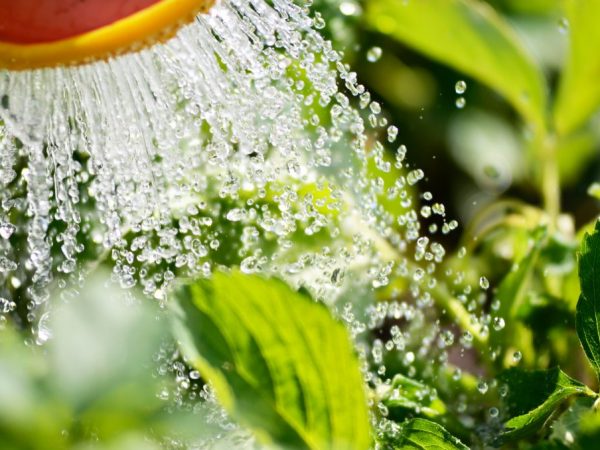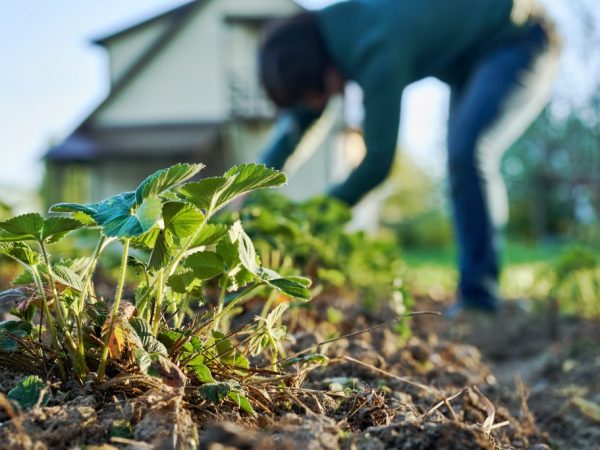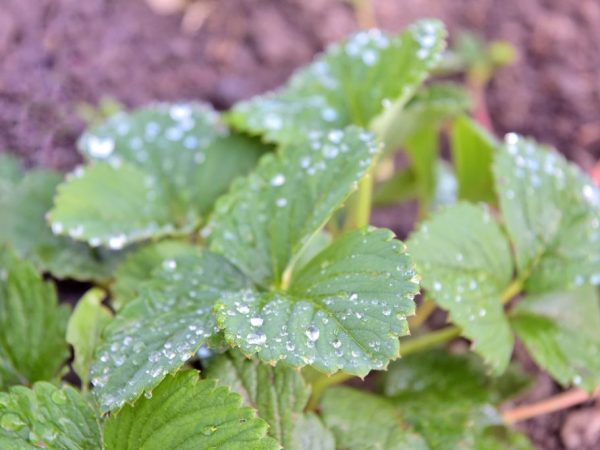How to care for strawberries in the fall - preparing the culture for winter
It is pleasant to eat sweet and aromatic strawberries grown by your own hands. But it requires competent care, including preparation for winter is important. Consider what procedures need to be carried out in the fall.

How to care for strawberries in the fall - preparing the culture for winter
When preparations begin
Preparing strawberries for winter largely depends on the region where the crop is grown. Let's consider the main differences.
In outskirts of Moscow
The climatic conditions are moderate, the autumn period lasts a long time, therefore preparatory measures begin in August.
The main thing is to complete all procedures in a timely manner, otherwise next season there is a high probability of damage to the strawberry plantation by pests.
Indeed, in winter, parasites hide under berry foliage, and in spring they begin active reproduction.
In the Urals
The area is characterized by cold climatic conditions and short summers.
Pre-winter pruning of berry foliage is not carried out. Otherwise, unfavorable weather prevents flower buds from forming on the cut plant, which will significantly reduce the yield.
In the second half of July, it is necessary to partially remove the foliage in order to protect the culture from actively breeding insects, and also so that the bushes recover and grow stronger before the arrival of autumn.
In Siberia
The climate is similar to that of the Ural. You should not completely cut the foliage. It is only permissible to cut off dried leaves, under which pests hibernate and breed in spring.
In August, it is advisable to remove wilted peduncles, remove the old layer of mulch, which can become a breeding ground for gray rot.
In the Leningrad region
Here, as in the middle lane, preparatory activities begin in early September.
To prevent the reproduction of insects and fungal infection, the old foliage is completely cut off.
Features of different varieties
Carrying out autumn care for strawberries, you need to take into account the characteristics of the variety: the fruiting period of the usual ends earlier, and the flowering of remontant berries continues until the arrival of frost.
Classic look
Autumn care includes pruning, feeding, insect control and shelter.
The berry culture tolerates winter well under a snow cover, but it is impossible to predict how much snow will fall, so the bushes are mulched beforehand.
It is preferable to take natural material as mulch.
- The best option is needles. It is not compressed, absorbs a small amount of moisture, does not allow rodents.
- You can also cover the plantation with humus and straw.
- If it is difficult to get natural material, then arcs are installed above the beds and a cover is made of spunbond.

You need to cover strawberries with the onset of frost
It is advisable to cover the bushes with the arrival of frost, at the end of September-October. Due to temperature stress, the plants become hardened and quickly adapt to wintering.
Ampel view
It is best to transfer strawberries from pots to open ground and cover with agrofibre, put a layer of straw or sawdust on top.
You can also move the plant to a closed, but cool (0 ° C) room (for example: an attic, closet or cellar). The main thing is that the place is dry, ventilated and with a light source.
Another storage option is a balcony.
- Bush pots are placed in spacious cardboard boxes. Polystyrene is placed on the bottom as an insulator.
- The space around the pots is covered with polystyrene chips.
- Protect the top with breathable covering material. You can wrap the whole box with it.
- To prevent the roots from drying out, the earth should be kept moist.
- With the arrival of spring, the boxes should warm up, after which they are opened more and more often for the plants to adapt.
Renovation view
More capricious strawberries, such as the popular Russian variety Albion, should be prepared carefully.
If not properly cared for, she will feel uncomfortable in winter, and the harvest in the new season will be poor.
Before wintering, the culture must be saturated with moisture. Sprinkle with warm water in the morning and evening.
There is a high probability that many plants with abundant fruiting will die due to the high load. Therefore, you will have to plant young bushes. It is better to do this at the end of summer and September.
Before the arrival of frost, you need to cut off the peduncles. Strawberries must be protected with a covering material; without it, the culture will not overwinter.
Care
Preparatory measures in the fall begin after the completion of fruiting. Let's consider all the necessary steps.
Pruning
Many people argue about whether to trim foliage.
- Some believe that plants should go naked for the winter.
- Others believe that removing foliage is optional.
The second group of debaters has the following argument: after a complete cut, the plant is in a stressful state, throws all its strength into restoring the green part, which is why it is significantly weakened. He does not have the strength to form peduncles. As a result, yield decreases. Also, foliage is a natural protection against frost.
Pruning should be done in the second half of summer.
Top dressing

After pruning, you need to feed with nitrogen-containing fertilizers
Autumn feeding is carried out twice: immediately after pruning and before shelter.
Fertilizers are applied only with wet soil moistened with precipitation, or after watering.
After pruning, strawberries require nitrogen to restore their green parts. As food you can use:
- ammonia (2 tablespoons per 10 liters of water);
- mullein (aqueous solution 1:10);
- bird droppings (aqueous solution 1:20);
- green fertilizer (preferably nettle);
- ammonium nitrate (20 g per 10 l of water).
They pour it under the bush, trying not to get on the aboveground part.
The second feeding is carried out with the use of phosphorus and potassium components, which help plants to strengthen their immunity, lay flower buds.
Ash is great. It is scattered on the ground (1 tbsp under each bush), mixed with the top soil layer or watered with ash infusion (2 tbsp per 10 liters of water, at the rate of 0.5 liters under a bush).
You can spray the plantation with ash, but the concentration must be reduced by 2 times.
From store preparations, superphosphate and potassium sulfate are used. They are scattered on the ground, connected to the ground, or watered with a liquid solution according to the instructions.
Watering
Even after the completion of fruit formation, strawberries should be looked after carefully, especially if the end of summer and the beginning of autumn are dry. Watering should be done at least once a week.
Plants should not be allowed to begin to dry out, to lower the shoots. But making a swamp on the ground is also unacceptable. To retain moisture, it is advisable to loosen and mulch the soil.
With the arrival of autumn, if the weather is rainy, then there is no need to water, there is enough precipitation. If autumn is dry, then regular watering will have to continue, because this is important for the formation of flower buds.
Spraying against diseases and pests
The berry grower will endure frost only by remaining in a healthy state. Infectious diseases and insect attacks should not be allowed.
If suspicious symptoms appear, you need to immediately identify the provocateur and start treatment. The drug is chosen taking into account the specific pathology.
If the young foliage shrivels, deforms, then the bushes are hit by a tick. Acaricides are used for treatment: usually "Kleschevit", "Actellik", colloidal sulfur. They are brought in when watering.
Reddish-brown spots appeared on the shoots - this is a brown spot. Strawberries themselves get rid of the fungus by shedding diseased leaves. But to prevent the return of infection after the last berry picking season, the plantation should be treated with copper sulfate.
For the prevention of fungal pathologies, the berry is treated with Bordeaux solution (1%). You can also use brilliant green (a drop of the product per 1 liter of water).
Summing up
Autumn care for strawberries and preparing them for winter is a troublesome business, even a novice gardener can handle it.
It is important to carry out a set of procedures: not only cover the berry, but pre-fertilize it, protect it from infection and insects. And then the culture will remain healthy until the new season and will show a high yield.

